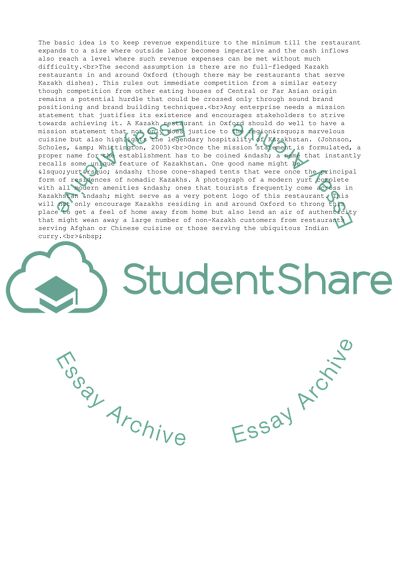Cite this document
(Opening up Kazakh restaurant in Oxford Research Paper, n.d.)
Opening up Kazakh restaurant in Oxford Research Paper. Retrieved from https://studentshare.org/management/1724043-opening-up-kazakh-restaurant-in-oxford
Opening up Kazakh restaurant in Oxford Research Paper. Retrieved from https://studentshare.org/management/1724043-opening-up-kazakh-restaurant-in-oxford
(Opening up Kazakh Restaurant in Oxford Research Paper)
Opening up Kazakh Restaurant in Oxford Research Paper. https://studentshare.org/management/1724043-opening-up-kazakh-restaurant-in-oxford.
Opening up Kazakh Restaurant in Oxford Research Paper. https://studentshare.org/management/1724043-opening-up-kazakh-restaurant-in-oxford.
“Opening up Kazakh Restaurant in Oxford Research Paper”, n.d. https://studentshare.org/management/1724043-opening-up-kazakh-restaurant-in-oxford.


